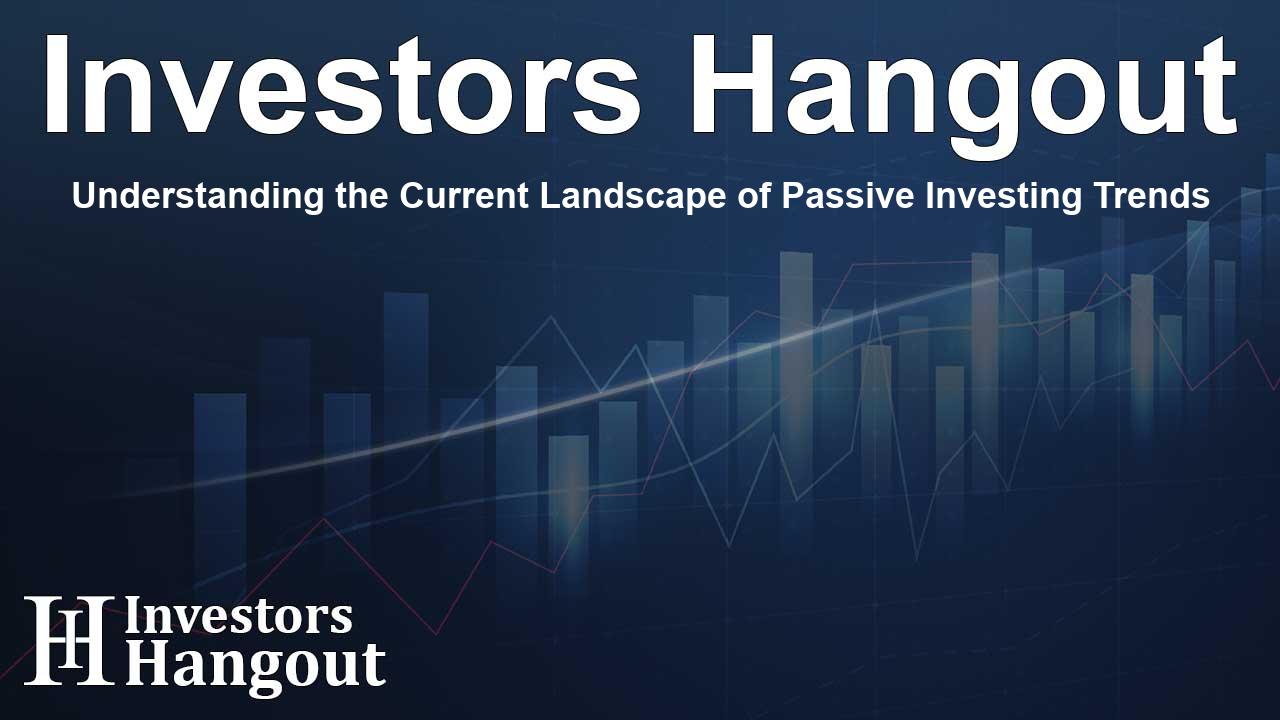Understanding the Current Landscape of Passive Investing Trends

The Current Sentiment Towards Passive Investing
Today’s investment landscape showcases a unique dynamic, with international investors displaying unprecedented optimism towards U.S. equities. Recent data indicates a record influx of $76.5 billion in U.S. stock purchases by foreign investors over a brief span.
A Word of Caution
However, there’s an intriguing counterpoint to this buying frenzy. A closer examination reveals that historically, such enthusiasm from overseas stakeholders can often signal an ominous turning point. They have a tendency to ramp up purchases right before significant market downturns.
Insider Sentiment: A Contrasting Perspective
While foreign investors are bullish, a stark contrast emerges from corporate insiders. Reports suggest that among publicly traded companies, only 12.1% showed any net buying from their executives this year. This sentiment raises significant concerns about the broader market's trajectory.
The Outlook from Insiders
Many corporate insiders are expressing doubts about the market's potential for growth. This skepticism is particularly pronounced across various market segments, which indicates a general bearish outlook on both growth and value stocks. Their perspectives include apprehensions regarding small, mid, and large-cap firms, reflecting a broader unease about future growth prospects.
The Impact of Valuation on Predictions
One factor influencing insider sentiment is the current valuation of stocks. Experts highlight that stock prices, on average, appear more expensive than ever. This evaluation poses a significant question: when the price paid for stocks is high, what does that mean for expected returns? The possibility of disappointing long-term returns relative to historical averages—such as those experienced with the S&P 500—arises as a genuine concern.
Macro Trends and Profit Growth
Adding to the complexity, macroeconomic trends seem to provide little support for the optimistic earnings growth projected for the near future. A significant indicator is the trend in the capacity utilization-dollar ratio, which has been decreasing. This decline may correlate with reduced profit growth, further complicating the outlook from investors.
The Challenges for Passive Investors
Passive investors find themselves in an increasingly precarious situation. Engaging in passive investment strategies means they may inadvertently counteract the cautious positions taken by market insiders. This active process of adjusting index compositions can lead to long-term costs.
Understanding Market Dynamics
Recent research sheds light on innovative approaches to rebalancing within index funds. Although these methods aim to align with market changes, they can result in purchasing shares at inflated prices while selling during downturns, which isn’t ideal for long-term growth. This raises an important consideration for investors who typically champion passive strategies as cost-effective.
Concluding Thoughts on Market Dynamics
The contrasting perceptions of foreign investors and corporate insiders create a fascinating, albeit unsettling, narrative in today's financial markets. As the market evolves, discerning the implications of these sentiments becomes crucial for navigating the investment landscape. Passive investors must remain vigilant, balancing their strategies against the critical insights provided by market insiders to enhance their understanding of potential risks and returns.
Frequently Asked Questions
What are the current trends in passive investing?
There is a growing concern among corporate insiders about the high valuations of stocks, while foreign investors show high levels of optimism.
Why should passive investors be cautious right now?
Passive investors should be wary as they are often on the opposite side of the bearish sentiments expressed by corporate insiders, potentially leading to poor investment outcomes.
How do corporate insiders' actions affect market predictions?
The actions of corporate insiders, such as low buying rates, often precede market downturns and can serve as indicators of future performance.
What historical evidence supports the caution towards foreign buying trends?
Historically, increased buying by foreign investors has often indicated market peaks preceding declines, emphasizing caution in the current context.
How does market valuation affect long-term investments?
High market valuations can lead to lower expected returns, as noted by analysts, making it essential for investors to assess these factors critically.
About The Author
Contact Dylan Bailey here.
About Investors Hangout
Investors Hangout is a leading online stock forum for financial discussion and learning, offering a wide range of free tools and resources. It draws in traders of all levels, who exchange market knowledge, investigate trading tactics, and keep an eye on industry developments in real time. Featuring financial articles, stock message boards, quotes, charts, company profiles, and live news updates. Through cooperative learning and a wealth of informational resources, it helps users from novices creating their first portfolios to experts honing their techniques. Join Investors Hangout today: https://investorshangout.com/
The content of this article is based on factual, publicly available information and does not represent legal, financial, or investment advice. Investors Hangout does not offer financial advice, and the author is not a licensed financial advisor. Consult a qualified advisor before making any financial or investment decisions based on this article. This article should not be considered advice to purchase, sell, or hold any securities or other investments. If any of the material provided here is inaccurate, please contact us for corrections.
